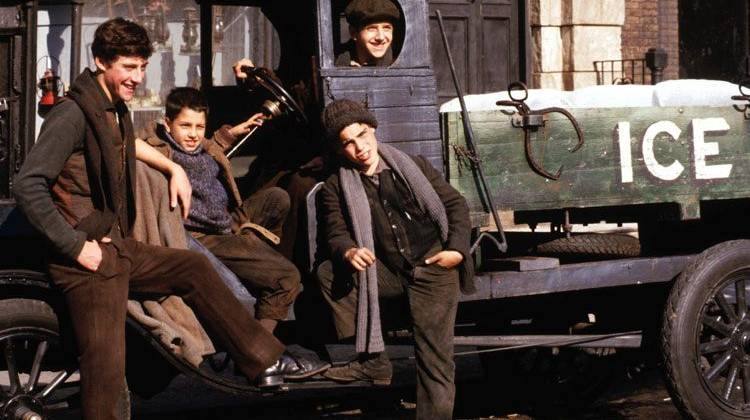Once Upon a Time in America (1984)

Sergio Leone’s “Once Upon a Time in America” (1984) stands as a magnum opus of crime cinema, a sprawling epic that transcends its genre trappings to explore themes of memory, identity, and the relentless pursuit of the American Dream. Adapted from Harry Grey’s novel “The Hoods,” the film unfolds with operatic grandeur, spanning several decades in the lives of its protagonists against the backdrop of early 20th-century New York City.
At its heart, “Once Upon a Time in America” chronicles the lives of David “Noodles” Aaronson, played with brooding intensity by Robert De Niro, and his childhood friends turned partners in crime. The narrative weaves between past and present, juxtaposing their rise through the ranks of the criminal underworld with the haunting memories of betrayal and lost innocence that haunt them.

Leone’s direction imbues the film with a sense of melancholy and nostalgia, capturing the contradictions of American society during the Prohibition era. The cinematography by Tonino Delli Colli paints a vivid portrait of New York’s Lower East Side, from its bustling streets and opulent speakeasies to its dark alleys and smoke-filled backrooms where illicit deals are struck. Each frame is steeped in period detail, evoking a sense of time and place that enhances the film’s immersive atmosphere.
Central to the narrative is Noodles’ complex relationship with his childhood friends and associates, including Max, portrayed with charismatic menace by James Woods, and Deborah, played by Elizabeth McGovern, the object of Noodles’ unrequited love. Their interactions unfold with emotional depth and psychological nuance, revealing the intricate dynamics of loyalty, betrayal, and fractured loyalties that define their intertwined fates.

Thematically, “Once Upon a Time in America” delves into the elusive nature of memory and the ways in which the past shapes the present. The film’s nonlinear narrative structure mirrors Noodles’ fragmented recollections, as he grapples with guilt over past betrayals and seeks redemption in a world where trust is a rare commodity. Leone’s screenplay, co-written with Leonardo Benvenuti, Piero De Bernardi, Enrico Medioli, and Franco Arcalli, masterfully navigates the complexities of its characters’ moral ambiguities and existential dilemmas.
The film’s evocative score, composed by Ennio Morricone, further enriches its emotional tapestry with haunting melodies and motifs that underscore the characters’ inner turmoil and the passage of time. Morricone’s music, ranging from melancholic piano compositions to sweeping orchestral pieces, enhances the film’s epic scope and underscores its themes of longing, regret, and the fleeting nature of ambition.

“Once Upon a Time in America” culminates in a poignant and enigmatic conclusion that resonates with themes of loss and redemption. As Noodles confronts the ghosts of his past and comes to terms with the consequences of his actions, the film transcends its crime drama roots to offer a profound meditation on the human condition.
In conclusion, “Once Upon a Time in America” (1984) stands as a towering achievement in cinema, celebrated for its epic storytelling, rich characterizations, and thematic depth. Through Sergio Leone’s visionary direction, Robert De Niro’s powerhouse performance, and a narrative that spans decades of American history, the film remains a timeless exploration of crime, memory, and the elusive pursuit of the American Dream.











